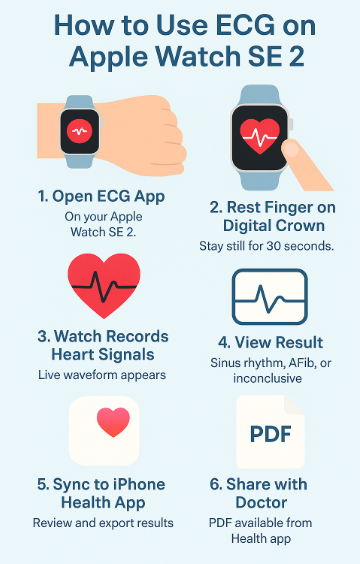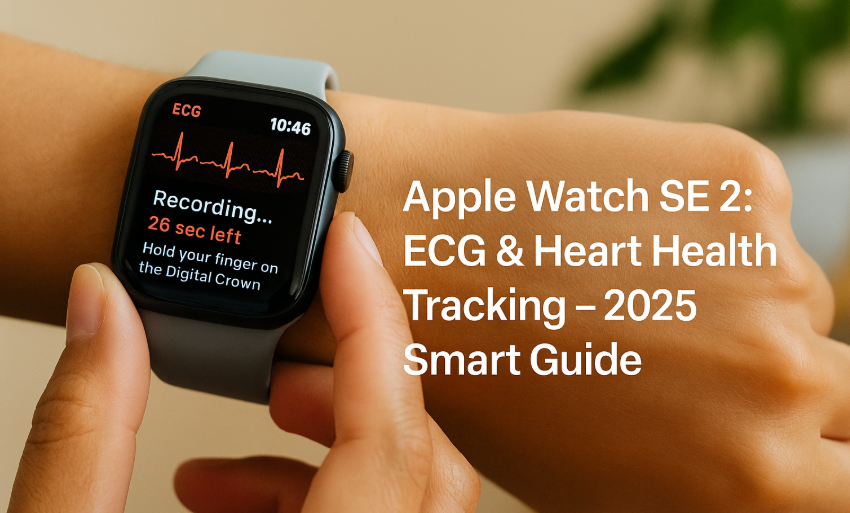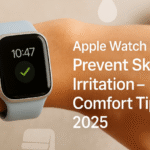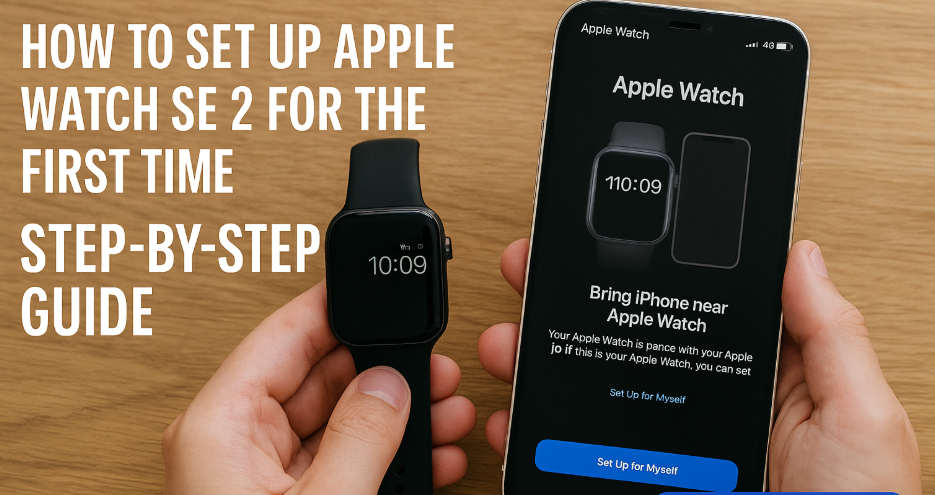The Apple Watch SE 2 does more than track steps and workoutsit can offer life-saving heart health insights with its ECG and heart rate monitoring features. If you’ve ever wondered how smartwatches can detect heart irregularities like AFib (Atrial Fibrillation), this guide breaks it down.
For a complete look at Apple Watch SE 2’s capabilities, don’t miss our Ultimate 2025 Review to explore all features before zooming in on heart monitoring.
What Is ECG and Why It Matters
ECG (Electrocardiogram) records electrical signals from your heart. Traditionally done in hospitals, Apple now brings this function to your wrist. It’s particularly useful for:
- Detecting AFib or irregular heartbeat
- Catching early signs of heart abnormalities
- Providing shareable data for cardiologists
Note: Apple Watch SE 2 supports ECG features only when paired with a compatible iPhone and watchOS version. Always ensure your device is updated.
How ECG on Apple Watch Works
- Place finger on Digital Crown to complete a closed circuit.
- Watch captures electrical signals for 30 seconds.
- AI interprets waveform: Normal (sinus rhythm), AFib, or inconclusive.
- Result is stored securely in the Health app.
Setting Up ECG for the First Time
- Open Health app on your iPhone
- Set up ECG in the Browse > Heart section
- Follow prompts to enable permissions
- Open ECG app on Watch to begin first reading
Tip: Make sure your wrist and watch are clean and dry before starting
Interpreting ECG Results
- Sinus Rhythm: Normal, steady heartbeat
- Atrial Fibrillation (AFib): Irregular rhythm, consult a doctor
- Low/High Heart Rate Alerts: You can configure thresholds in Health settings
- Inconclusive: Can occur due to movement, poor contact, or heart rate outside detection range
When to Use ECG
- Palpitations or fluttering sensations
- Sudden fatigue or dizziness
- Post-exercise cool down checks
- Periodic monitoring for diagnosed AFib
Sync with Health App
All ECG records are automatically synced with iPhone’s Health app. You can:

- View detailed waveform history
- Export readings as PDFs
- Share directly with healthcare providers
Testimonial:
“I had no idea my irregular fatigue was heart-related. The ECG flagged AFib, and I saw my doctor in time. Forever thankful for this feature.”
— Sandeep G., 52, Pune
Expert Insight
“Wearables like Apple Watch can’t replace clinical ECGs, but they’re excellent first responders. They empower early detection, especially in asymptomatic AFib cases.”
— Dr. Meera Joshi, Cardiologist, Delhi
Use Cases
- Seniors tracking irregular rhythms
- Athletes monitoring post-run recovery
- Office workers checking mid-day palpitations
- Users with family history of heart issues
FAQs
Is Apple Watch SE 2 ECG FDA-approved?
Yes, it holds clearance for AFib detection in eligible markets.
Can I use ECG without an iPhone?
No. The ECG app requires a connected iPhone for setup and storage.
Will it alert during sleep?
Not in real-time. Use background heart rate notifications for passive monitoring.
Is ECG on SE 2 different from Series 8/Ultra?
They use similar algorithms; the difference lies in other health sensors like SpO2.
Heart Health Best Practices
- Don’t ignore symptoms—even normal ECG can miss short arrhythmias
- Use in calm, seated position for accuracy
- Avoid caffeine before a reading
- Check multiple times if unsure
Final Thoughts
Apple Watch SE 2’s heart health features are revolutionary not for replacing doctors, but for empowering proactive care. With ECG and Health app integration, users gain a better understanding of their cardiovascular wellbeing right from the wrist.







